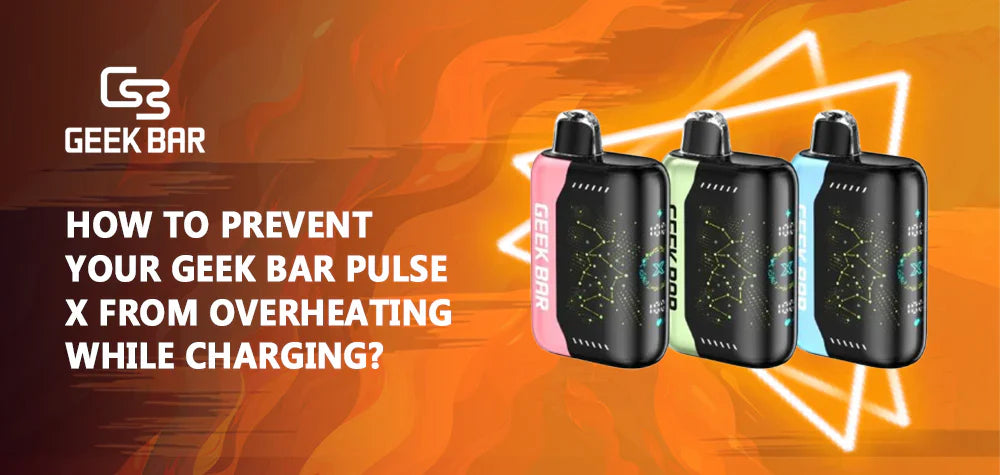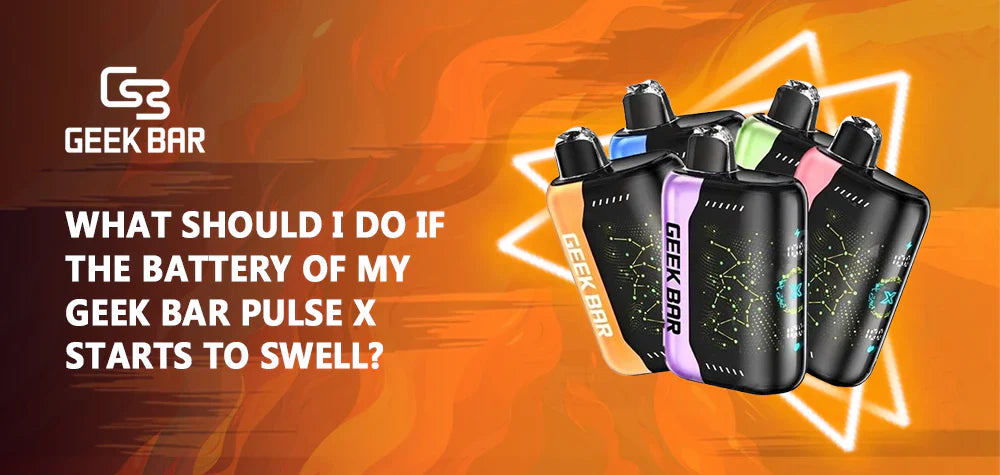
How To Prevent Your Geek Bar Pulse X From Overheating While Charging?
Overheating in the Geek Bar Pulse X during charging typically stems from electrical, environmental, or hardware-related factors. Lithium-ion batteries, like those in the Pulse X, generate heat as a byproduct of electrochemical reactions during charging. While mild warmth is normal, excessive heat indicates underlying issues such as incompatible chargers, prolonged charging sessions, or blocked airflow vents. Environmental stressors like high ambient temperatures or humidity exacerbate these problems by trapping heat within the device. Additionally, physical damage to the battery or charging port can disrupt power delivery, leading to thermal buildup.
Key Prevention Strategies
To prevent overheating, always use the manufacturer-recommended USB-C cable and a compatible charger with a 5V/2A output. Third-party chargers may deliver unstable voltage, forcing the battery to draw excess current and generate heat. Certified accessories ensure optimal power delivery, minimizing electrical stress on the battery. Disconnect the device immediately after it reaches full charge, as overcharging strains the battery and can degrade cells over time. Limit charging to 60–90 minutes, as most Pulse X units fully charge within this window.
Charge the device in a cool, dry environment with adequate airflow, avoiding placement near heat sources such as radiators or direct sunlight. Hard, flat surfaces like desks are preferable to soft materials like beds, which can block ventilation. Maintain cleanliness of the USB-C port by removing dust, lint, or e-liquid residue monthly using compressed air or a soft brush. Inspect the charging cable for frayed wires or bent connectors, replacing damaged accessories promptly to prevent resistance-related heating.
Monitor battery health closely, as lithium-ion batteries degrade after 300–500 charge cycles, losing their ability to manage heat efficiently. Replace the device annually or sooner if you notice reduced battery life or inconsistent performance. Avoid deep discharges by charging the device before it drops below 20% capacity, which helps maintain long-term battery stability.
Addressing Environmental and Usage Factors
Store and charge the device in temperatures between 0°C and 35°C (32°F–95°F) to prevent accelerated chemical reactions within the battery. Prolonged exposure to hotter conditions increases swelling and overheating risks. Ensure proper ventilation during charging by keeping airflow vents unobstructed. Regularly inspect vents for blockages and clean them with a dry cloth to facilitate heat dissipation. Refrain from using the device while it charges, as simultaneous vaping and charging generate dual heat from the battery and coil, overwhelming its cooling capacity.
Troubleshooting Persistent Overheating Issues
If overheating continues despite preventive measures, test alternative certified chargers to rule out accessory faults. While disposable vapes lack user-serviceable firmware, contact Geek Bar's support if overheating suggests manufacturing defects. Assess battery integrity by checking for swelling, warping, or hissing sounds, which indicate severe damage. In such cases, discontinue use immediately to avoid safety hazards.
Critical Safety Measures for Swollen Batteries
If you encounter what to do if your battery starts to swell, prioritize safety by disconnecting and powering down the device immediately. Isolate it in a fireproof container away from flammable materials to mitigate fire risks. Seek professional assistance from a certified e-waste recycler or Geek Bar's customer service for safe disposal, as swollen batteries should never be punctured or discarded in household trash.
Long-Term Maintenance and Best Practices
Conduct monthly inspections of the battery compartment, charging port, and airflow vents to identify early signs of wear, such as discoloration, debris, or loose components. Adopt partial charging habits by unplugging the device once adequately charged, mimicking the practice of keeping lithium-ion batteries between 50% and 80% capacity to reduce stress. Educate yourself on warning signs like rapid power drain, erratic LED behavior, or burning odors, which often precede overheating and require prompt intervention.
Conclusion
Preventing overheating in the Geek Bar Pulse X requires disciplined charging practices, environmental awareness, and regular maintenance. By using certified accessories, optimizing charging conditions, and monitoring battery health, users can ensure safe and efficient operation. Always address swelling or persistent overheating immediately to mitigate risks, prioritizing professional guidance for unresolved issues. These strategies not only extend the device's lifespan but also safeguard users from potential hazards associated with lithium-ion batteries.


